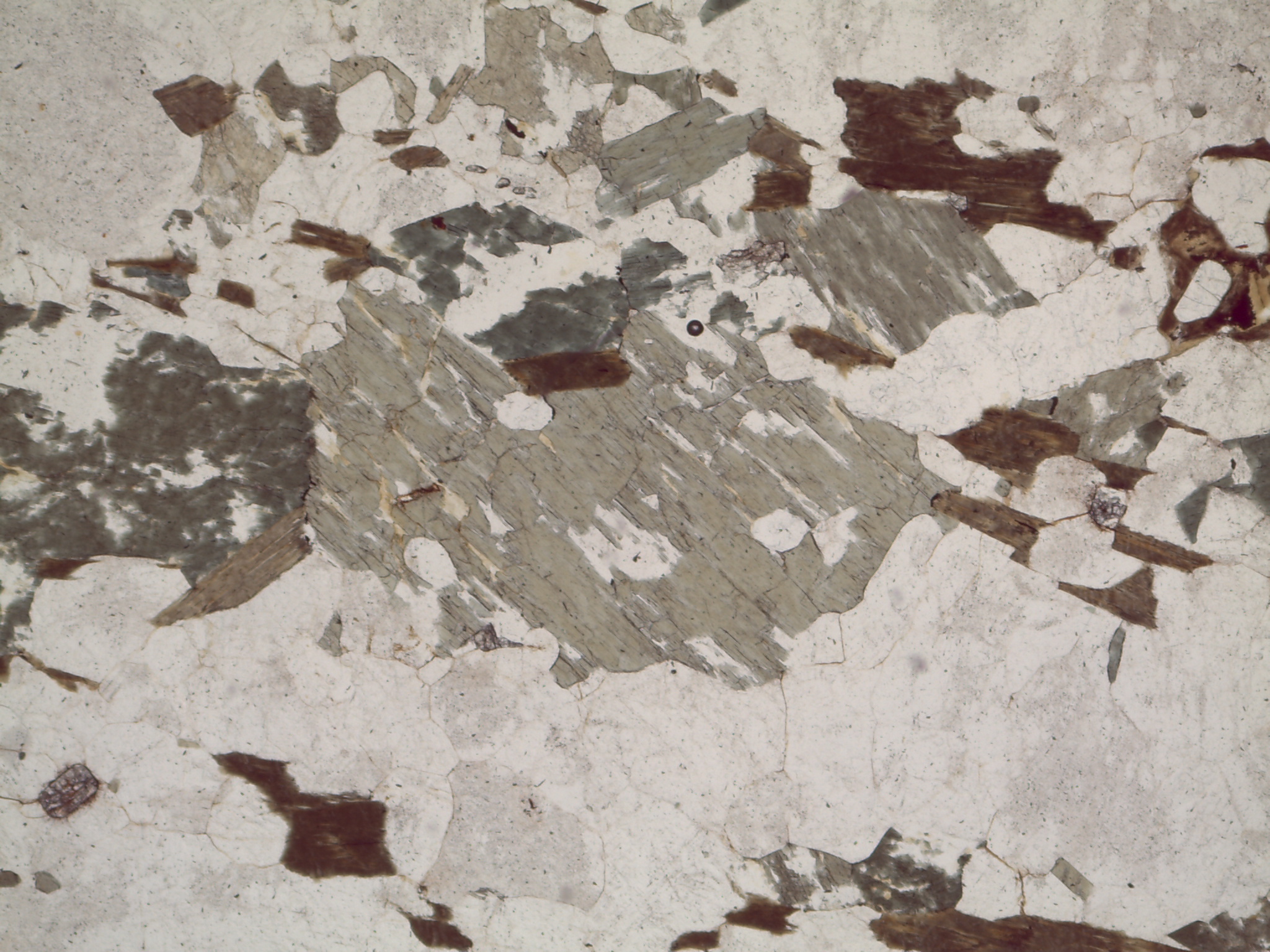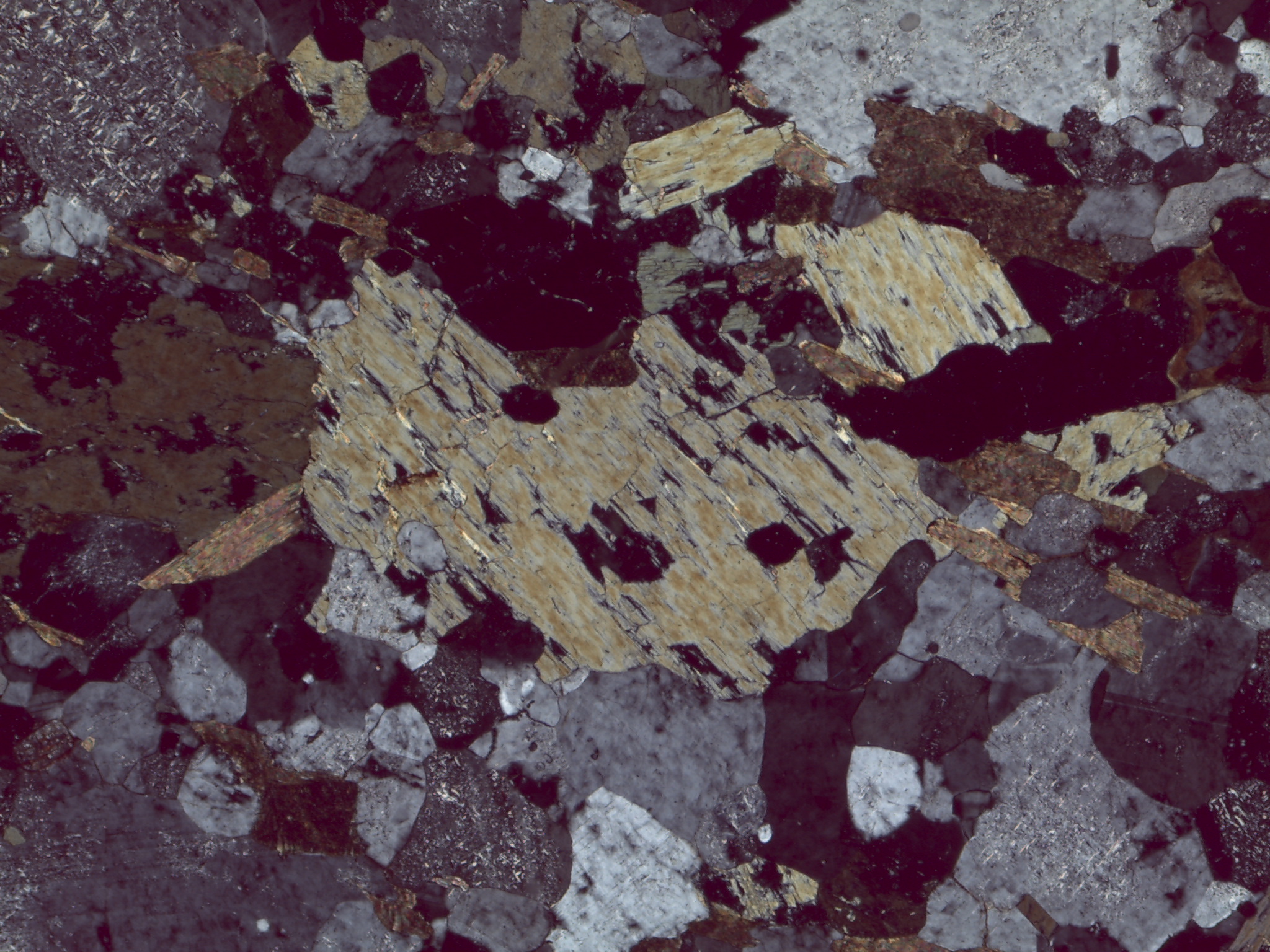People trying to identify hornblende in hand sample often find it helpful to look for “sparkly tree bark.”
| Physical Properties | |
| Chemical formula | (K,Na)0-1(Ca,Na,Fe,Mg)2(Mg,Fe,Al)5(Si,Al)8O22(OH)2 |
| Class | Inosilicate Double chains of linked tetrahedra |
| Crystal system | Monoclinic |
| Habit | Massive Prismatic Bladed Columnar Fibrous |
| Color | Black or dark green |
| Hardness | 5 to 6 |
| Specific gravity | 3.0 to 3.5 |
| Cleavage | Two perfect prismatic {110} |
| Fracture | Uneven |
| Luster | Vitreous |
| Transparency | Translucent |
| Streak | White |
| Optical Properties | |
| PPL | Brown, green, blue-green, or yellow-brown Moderate to strong pleochroism “60/120” cleavage (actually 54° and 124°) |
| XPL | 2nd order oranges; can range up to 4th order |
| δ | 0.02 |
| Twinning | Contact twins are common |
| after Perkins, 332-333 |
Hornblende in Hand Sample
Hornblende
A different hornblende
Hornblende in amphibolite
Hornblende in hornblende muscovite schist
Black hornblende and pinkish-red corundum (ruby) in green zoisite
Scanning electron micrograph of hornblende
Scanning electron micrograph of a hornblende grain plucked from a garnet-rich sand from the Moray Coast in northeastern Scotland (there’s diatom tests on it!)
Hornblende in Thin Section
Thin Section GigaPans
Hornblende in augen gneiss, plane polars
Hornblende in augen gneiss, crossed polars

